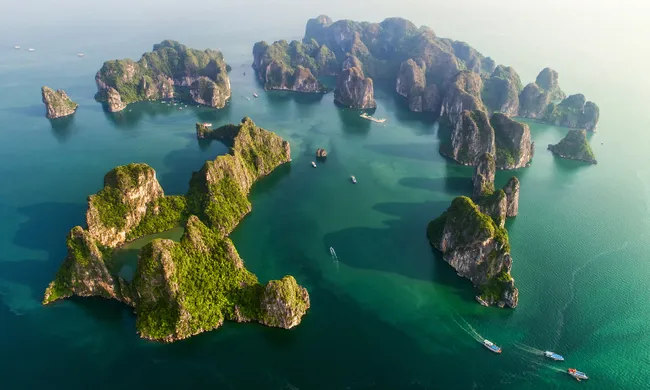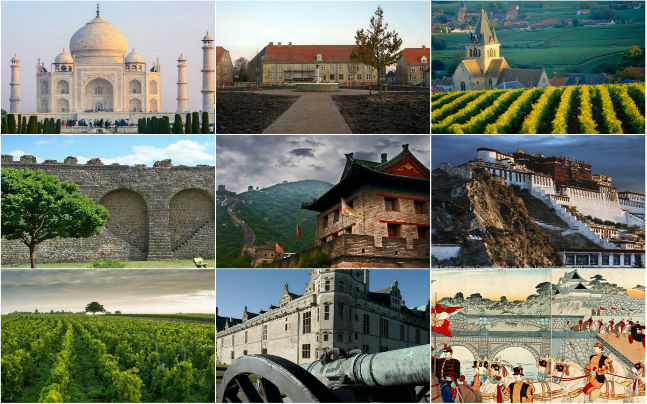Asia is home to a wealth of cultural and natural wonders that have been recognized and preserved by UNESCO as World Heritage Sites. These sites offer a glimpse into the rich history, stunning architecture, and breathtaking landscapes that make the continent truly unique. Join us as we explore the top 10 UNESCO World Heritage Sites in Asia, each with its own story to tell and wonders to behold.

Unveiling Asia’s Grandeur: Top 10 UNESCO World Heritage Sites
Asia, a cradle of civilization brimming with ancient wonders and architectural marvels, boasts a staggering number of UNESCO World Heritage Sites. These cultural and natural treasures represent the pinnacle of human achievement and the breathtaking beauty of our planet.
- Angkor Wat, Cambodia Angkor Wat is perhaps the most iconic of all UNESCO World Heritage Sites in Asia. This ancient temple complex, located in Siem Reap, Cambodia, is a testament to the grandeur and sophistication of the Khmer Empire. Built in the 12th century, Angkor Wat is renowned for its intricate carvings, towering spires, and sprawling grounds, making it a must-visit destination for history buffs and adventure seekers alike.
- Great Wall of China, China Stretching over 13,000 miles across northern China, the Great Wall is one of the most impressive architectural feats in human history. Built over centuries to protect the Chinese empire from invasions, the Great Wall is a symbol of strength, perseverance, and ingenuity. Today, visitors can explore various sections of the wall, each offering stunning views and insights into China’s rich cultural heritage.
- Taj Mahal, India Widely regarded as one of the most beautiful buildings in the world, the Taj Mahal is a masterpiece of Mughal architecture and a symbol of love and devotion. Built in the 17th century by Emperor Shah Jahan as a mausoleum for his beloved wife Mumtaz Mahal, the Taj Mahal is adorned with intricate marble inlay work, delicate carvings, and lush gardens, making it a UNESCO World Heritage Site not to be missed.
- Kyoto Historic Monuments, Japan Kyoto, the former capital of Japan, is home to a wealth of historic monuments and cultural treasures that have been designated as UNESCO World Heritage Sites. From the stunning Kinkaku-ji Temple (Golden Pavilion) to the serene Ryoan-ji Temple with its famous rock garden, Kyoto offers visitors a chance to step back in time and experience the beauty and tranquility of traditional Japanese architecture and design.
- Borobudur Temple Compounds, Indonesia Located on the island of Java, the Borobudur Temple Compounds are the largest Buddhist monument in the world and a UNESCO World Heritage Site of immense cultural significance. Built in the 9th century, Borobudur is adorned with thousands of intricate relief panels and over 500 Buddha statues, offering visitors a glimpse into Indonesia’s rich religious and artistic heritage.
- Ha Long Bay, Vietnam Ha Long Bay is a breathtaking natural wonder located in northeastern Vietnam. With its towering limestone karsts, emerald waters, and lush islands, Ha Long Bay is a UNESCO World Heritage Site of outstanding natural beauty. Visitors can explore the bay by boat, kayak, or even seaplane, taking in the awe-inspiring scenery and discovering hidden caves, secluded beaches, and floating fishing villages along the way.
- Petra, Jordan Hidden amidst the rugged desert landscape of southern Jordan, Petra is an ancient city carved into the rose-red cliffs by the Nabataeans over 2,000 years ago. This UNESCO World Heritage Site is home to a wealth of archaeological treasures, including the iconic Treasury (Al-Khazneh), the Monastery (Ad Deir), and the Royal Tombs, making it a must-visit destination for history enthusiasts and adventure seekers alike.
- Ayutthaya Historical Park, Thailand Located just north of Bangkok, the Ayutthaya Historical Park is a UNESCO World Heritage Site that preserves the ruins of the ancient capital of the Kingdom of Ayutthaya. Founded in the 14th century, Ayutthaya was once one of the largest and most prosperous cities in the world, boasting magnificent temples, palaces, and statues. Today, visitors can explore the park by bicycle or on foot, marveling at the impressive architecture and rich history of this former royal city.
- Gyeongju Historic Areas, South Korea Gyeongju, often referred to as the “Museum Without Walls,” is a UNESCO World Heritage Site that preserves the ancient capital of the Silla Kingdom. With its royal tombs, Buddhist temples, and archaeological sites, Gyeongju offers visitors a fascinating glimpse into Korea’s rich cultural heritage and history. Highlights include the Bulguksa Temple, Seokguram Grotto, and the Cheomseongdae Observatory, among others.
- Kathmandu Valley, Nepal Nestled amidst the foothills of the Himalayas, the Kathmandu Valley is a UNESCO World Heritage Site renowned for its ancient temples, palaces, and squares. Home to the cities of Kathmandu, Patan, and Bhaktapur, the valley is a living museum of Nepalese art, architecture, and culture. Visitors can explore medieval Durbar Squares, Buddhist stupas, and Hindu temples, soaking in the sights, sounds, and smells of this vibrant and historic region.
The top 10 UNESCO World Heritage Sites in Asia offer a wealth of cultural, historical, and natural wonders waiting to be explored. From ancient temples and historic monuments to breathtaking landscapes and architectural marvels, these sites are a testament to the rich diversity and heritage of the continent. So why not embark on a journey of discovery and immerse yourself in the wonders of Asia’s UNESCO World Heritage Sites?




